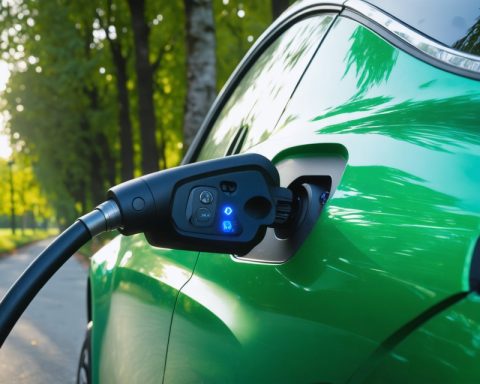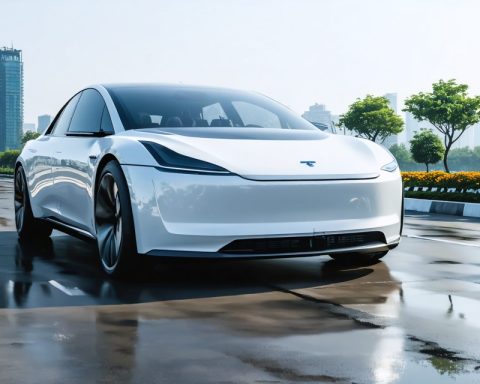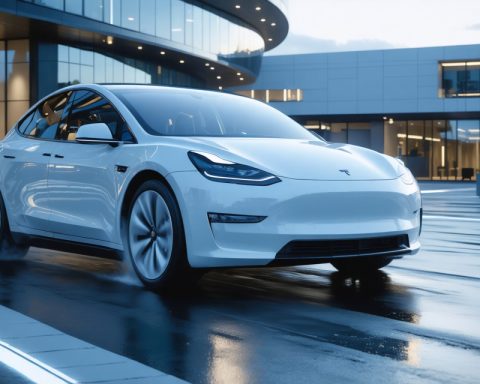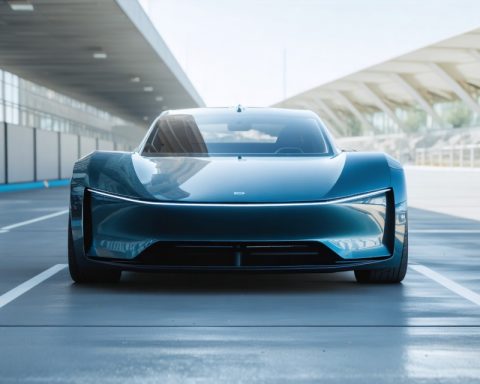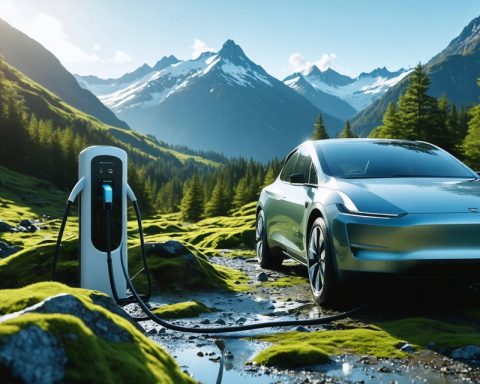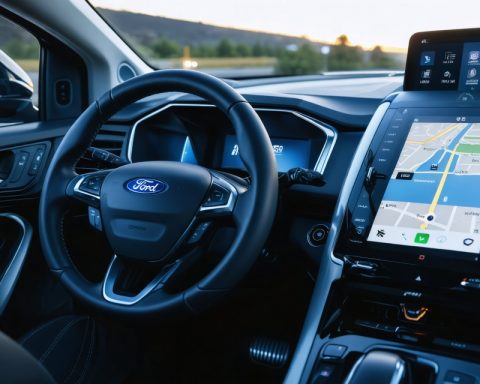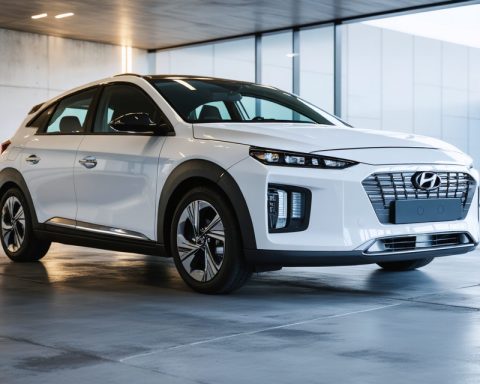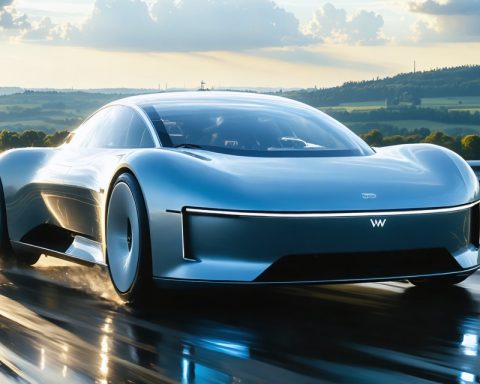- The Chevrolet Blazer EV SS made history as the first battery-electric pace car at the prestigious Daytona 500, showcasing significant strides in sustainable racing.
- This electric vehicle features 615 horsepower and accelerates from 0 to 60 mph in 3.4 seconds, proving electric cars can deliver high performance without noise and emissions.
- NASCAR’s commitment to sustainability is evident in its goal of achieving net-zero emissions by 2035, incorporating renewable energy, and installing EV charging stations at tracks.
- Electric vehicles, such as the Blazer EV SS, offer reduced long-term costs, lower fuel expenses, and cleaner air benefits, supported by an MIT study on emissions.
- The increasing presence of electric vehicles at racing events reflects a broader trend towards greener technology and a shift in fan preferences.
- This moment marks the beginning of a sustainable future in racing, demonstrating that high-speed thrills and environmental responsibility can coexist.
Under the fervent buzz of the Daytona 500, where gasoline and grit have long reigned supreme, a quiet transformation took center stage. The Chevrolet Blazer EV SS, with its sleek lines and silent might, managed to do what seemed improbable—it led the roaring charge of NASCAR with a whisper. This wasn’t just any appearance; this was history in the making. For the first time at such a prestigious NASCAR event, a battery-electric vehicle took on the esteemed role of the pace car, guiding the pack in their fiery pursuit.
This significant debut at Daytona was more than a display of cutting-edge technology. With a whopping 615 horsepower propelling it from zero to 60 mph in a blistering 3.4 seconds, the Blazer EV SS wasn’t merely a nod to sustainable innovation—it was a declaration. Racing enthusiasts and environmental advocates alike noted the vehicle’s ability to deliver power and performance without the thunderous engine roar or the waft of exhaust fumes, marking a new chapter in racing dynamics.
Meanwhile, NASCAR doesn’t just flirt with the idea of sustainability; it’s embracing it. The organization is speeding towards a greener future, targeting net-zero emissions by 2035. Renewable energy is being woven into the fabric of their tracks, recycling is ramping up, and EV charging stations are becoming as crucial as fuel pumps. This strategic shift highlights a commitment to evolving alongside the rapidly changing auto industry.
The Chevrolet Blazer EV SS proves that going electric isn’t just about eco-consciousness—it’s about driving innovation. With competitive performance metrics and the added benefit of a federal tax credit, this vehicle is poised to be a game-changer both on the racetrack and in everyday life. Electric vehicles have demonstrated a clear edge in reducing long-term costs, slashing fuel expenses, and championing the fight for cleaner air. An MIT study fortifies this claim, illustrating how EVs emit markedly less carbon pollution per mile compared to their internal combustion counterparts.
Former NASCAR star David Ragan observed a shift in the air—or lack thereof—among the fans. He noted more EVs in the lot now than ever before, a trend racing ahead into the next five years. The tides are turning, and with vehicles like the Blazer EV SS at the helm, the road ahead looks not only exciting but decidedly cleaner.
This pivotal moment at Daytona is more than a one-off spectacle. It’s a sneak peek into the harmonious future of speed and sustainability, showing car aficionados everywhere that you don’t have to sacrifice thrill for responsibility. The race to a sustainable tomorrow has begun, and it’s electrifying.
The Electrifying Dawn: How the Chevrolet Blazer EV SS is Pioneering NASCAR’s Green Revolution
A Game-Changing Moment in NASCAR
The introduction of the Chevrolet Blazer EV SS as a pace car in the prestigious Daytona 500 isn’t just a nod to cutting-edge automotive technology; it’s a pivotal shift towards sustainability in motorsport. As NASCAR embraces a green future with the ambition to reach net-zero emissions by 2035, this electric vehicle leads the charge with powerful performance, reaching 615 horsepower and accelerating from 0 to 60 mph in just 3.4 seconds.
Expert Insights and Performance Reviews
An expert review of the Blazer EV SS highlights its impressive balance of power and eco-friendly credentials. Its use in such a high-profile race signifies an industry-wide shift as electric vehicles (EVs) gain traction for their superior efficiency and sustainability. According to a study by MIT, EVs significantly reduce carbon emissions per mile compared to traditional vehicles, aligning with NASCAR’s evolving ethos.
The Electric Revolution in Motorsports
The move to integrate EVs more fully into racing is part of a broader trend within the automotive industry. Manufacturers are focusing on sustainable development, with many pledging to reduce carbon footprints and increase the use of renewable energy. NASCAR’s move to promote EVs is a testament to this shift, underscored by the increasing presence of EVs in event parking lots—a change noted by former NASCAR driver David Ragan.
Real-World Implications and Future Forecasts
With more than just its place as a pace car, the Chevrolet Blazer EV SS sets a precedent for future NASCAR vehicles and beyond. Analysts predict that as infrastructure for EVs, such as charging stations, expands, there will be a significant increase in EV adoption for everyday use. The federal tax credits available for such vehicles make them an attractive option for consumers looking to balance performance with environmental responsibility.
In terms of market trends, the global automotive industry is experiencing rapid growth in EV sales. Reports anticipate that by 2030, EVs could make up more than 30% of all vehicle sales, driven by increasing consumer awareness and supportive governmental policies.
How to Transition to an Electric Vehicle
For those inspired by NASCAR’s progressive steps, transitioning to an electric vehicle can be straightforward:
1. Evaluate Your Driving Habits: Consider your daily mileage and access to charging options.
2. Research Incentives: Explore federal and state incentives for EV purchases that can ease the financial transition.
3. Test Drive: Experience the performance firsthand by visiting dealers offering test drives for various EV models.
4. Plan for Charging: Consider installing a home charging station or identify public charging options in your area.
Quick Tips for Potential EV Buyers
– Check Charging Infrastructure: Before purchase, ensure that adequate charging facilities are available in your area.
– Explore Available Models: Different vehicles offer varying features and range capabilities.
– Consider Long-Term Savings: Factor in lower maintenance and fuel costs when evaluating the total cost of ownership.
Final Thoughts: The Road Ahead
The history-making deployment of the Chevrolet Blazer EV SS is more than a snapshot in time—it’s an electrifying glimpse into the future of motorsport and personal transport. With industry giants like NASCAR spearheading the change, the road ahead promises to be both thrilling and sustainable. For aspiring EV owners, these shifts represent a future where high performance doesn’t come at the environment’s expense.
For additional insights into the automotive industry’s shift towards electric vehicles, visit NASCAR and Chevrolet.

